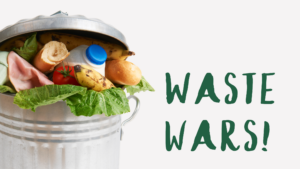Our latest blog comes from public health nutritionist, Chantelle Vella. Chantelle is passionate about helping parents create calm and nourishing mealtimes, without the fuss!
I know it can be hard to get kids to eat all of the nutritious food they need every day, especially when you are in a never-ending war with fussy eaters.
Hiding veg from your littlies who screw up their noses at green and unfamiliar foods, is certainly an idea that I’m sure you’ve tried-and-tested in the kitchen at some point, with varying degrees of success.
However, some food companies are “in” on this secret, and not only attempt to disguise “villain vegetables” (looking at you, broccoli), but also manage to sneak in added sugars, salt, saturated fat and other cheap ingredients while doing so. While this might make their products tastier and more appealing to children, it’s not necessarily a match for the farmers patch.
Masterfoods case study: is what you see, what you get?
A side of sauce or other condiments such as herbs and spices, can be a helpful and flavoursome way to encourage kids to try new foods, particularly vegetables. This is for a couple of great reasons. Firstly, a sauce can mask some of the bitterness children are quite sensitive too as their taste buds develop. Secondly, store-bought sauces are usually of a consistent taste, texture and colour, providing children with a sense of safety around unfamiliar veggies, which might not be prepared or accepted the same way with each repeated exposure.
Masterfoods have tried to take this to the next level with their, Hidden Veg Tomato Sauce. Claiming to have an impressive ‘5 serves of veg in every bottle’, it sounds like every parents’ dream, right? Before we get too excited, let’s take a critical look at what’s on offer.
Image: Masterfoods Tomato Sauce – Hidden Veg, front-of-pack marketing and back-of-pack ingredients list and nutrition information panel. Source: Crystal Eio.
Ingredients and Nutrition Information Panel
With tomato (paste), carrot (pulp), sweet potato (puree) and onion listed as the 4 veg-tastic stars of the show, you might have easily missed the fact that added sugar is listed as the second ingredient by product weight. Vegetables, including starchy varieties such as potato, do not naturally contain added sugar. While a squirt of tomato sauce probably isn’t going to send their blood sugar levels sky-rocketing, the sweetness of the sauce may encourage kids to ask for other sweet foods of low nutritional value if they have a particular preference for similar sweet-tasting foods.
Now unlike eating a whole tomato, carrot, sweet potato or an onion, either fresh, frozen, canned or otherwise, there is barely any dietary fibre to be found (2.2g per 100g), as this has been significantly lost in the sauce-making process. Fibre plays an important role in keeping your kids’ gut bugs happy, helps to stabilise their energy levels, and keeps them fuller for longer.
One of the tricky things with nutrition information panels, as with this product, is that most of the time they are based on the diet of a healthy adult, even if it’s a product for children or adolescents. A red flag that might be easily overlooked here, especially with sauce used as condiment, is that there is a presence of greater than 500mg of sodium per 100g, which is significant even for adults! This isn’t helped by the fact added salt listed on the ingredients list. From another perspective, while 90mg per serve is 4% of an adult’s recommended dietary intake for sodium, this is actually quite significant for young children, especially children two or younger, whose kidneys have not fully matured. By comparison, one medium raw tomato (152 grams), which could be served in a salad, or blended into your own homemade tomato sauce, contains only 6mg of naturally occurring sodium!
Factoring in the low dietary fibre, energy and protein content, high level of sodium (including added salt), and the addition of added sugar, this product has been awarded 3 stars based on the front-of-pack Health Star Rating system assessment criteria. In other words, Masterfoods ‘Hidden Veg Tomato Sauce’ is definitely no replacement for a simple salad, but it’s also not the most terrible thing kids could be eating in small amounts – especially if it helps them enjoy vegetables, meat, fish, chicken, wholegrains, dairy and other foods they are learning to like.
Back to the Main Health Claim…
The big marketing hook here for parents is that ‘hidden’ in this 500mL bottle of tomato sauce is FIVE serves of veg. Let’s look at what 5 serves of veg actually looks like, according to the Australian Dietary Guidelines.
Image: Serving Sizes. Source: Chantelle Vella.
It therefore sounds super difficult to literally try and squeeze such a large quantity of whole foods out of a sauce bottle without impacting on the fibre, vitamin and mineral content. Doing the math, you would need to provide 33 x 15mL serves of sauce for your kids be able to consume the claimed five serves of veg! That sounds like a long time to ‘reap the rewards’ for what is really of very little nutritional benefit from the actual sauce itself overall.
So, to hide or not to hide veggies from my kids at mealtimes?
While hiding veg does have a place at winning over even the fussiest of eaters, it should not be relied on long-term, and as your only mealtime strategy. This is because sometimes children can perceive hiding vegetables or other disliked foods, as an act of betrayal and mistrust, especially once children are old enough to recognise vegetables and their distinct flavours. This in turn, may cause them to be even pickier, more emotional and rebellious, and refuse foods they commonly eat, or have shown a previous liking too.
The best way to overcome this, is to be honest with your kids about what food is actually on their plates or in their lunchbox, not make a fuss about it, and to persevere in repeatedly exposing them to different foods, even if they don’t like it or haven’t tried it at first.
The more you involve kids in the shopping, preparation, cooking and gardening process, the more likely overtime they will become curious and adventurous eaters, and less picky about what’s on offer.
Each child will learn to like different types of foods in their own time. If fussy eating continues and the growth and development of your child is a concern, it’s definitely worth seeking the help of your general practitioner or paediatrician, while working with an Accredited Practicing Dietitian or Registered Nutritionist who specialises in kids’ nutrition.
Conclusion
The main takeaway here is to be wary of ‘hidden veg’ claims made on packaged and highly processed foods. While “health foods” are an attractive and rapidly growing market, it is very easy to fall prey to some very well thought-out marketing tricks if you don’t take a minute or two to check out the ingredients list and nutrition information panel. However, the most trustworthy source of veg, are the ones you grow yourself, discover at your local farmers market, or pick up in the fresh produce aisle.
This post has been written by public health nutritionist, Chantelle Vella. You can follow Chantelle on Instagram @thevisionarynutritionist or on Twitter @HealthDisrupter, where she shares her passion and insight for the world of nutrition, public health and health communications.






